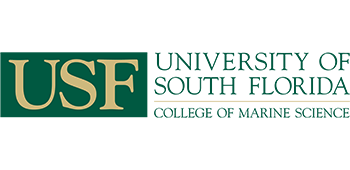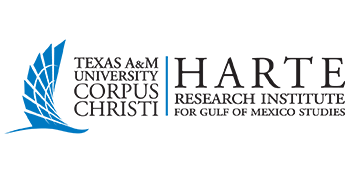The C-IMAGE consortium has developed a series of ecological models to (1) examine the impacts of the DWH oil spills on the energy transfers through the marine food web and the consequences of the MOSSFA event, and to (2) test mitigation measures (i.e. large-scale fishery closures on communities of interacting species) via coupled numerical models, from physical oceanography and plankton to fisheries. Consistent with C-IMAGE goals, such causal mechanistic modeling represents a conceptual and quantitative framework to integrate data collected under the various program Tasks.
Since few pre-spill phyto- and zooplankton data sets in the NEGoM are available to assess the impacts of petroleum releases during the DWH spill, C-IMAGE researchers first employed a 46-year time series (1965 to 2011), on the West Florida Shelf (WFS) to guide construction and validation of a complex two-dimensional (2-D), cross-shelf model- the ZOOplankton SIMulation (ZOOSIM). The model is specifically designed to reproduce lower level trophic dynamics within subtropical and tropical ecosystems and tracks the daily fluxes of C, N, P, Si, and Fe through the dissolved and particulate forms of these elements.
A set of 2-D simulations have been conducted for a cross shelf transect in the NEGoM, starting at the 5-m isobath and running along the axis of DeSoto Canyon to the 1,500-m isobath. Preliminary results suggested that a combination of increased nutrient enrichment, sediment loading, and local suppression of zooplankton reproduction may have led to increased fall-out of planktonic matter accelerated by particle aggregation.
The C-IMAGE consortium developed present day (c. 2010) and historical (c. 1980) Atlantis models for the GoM representing dynamics of 91 species groups, from bacteria to apex predators. Tuning the Atlantis model required reconstruction of historical dynamics from 1980 to 2012. This captured abundance trends for 33 species groups and catch trends for 23 fishing fleets. The reconstruction was driven with time series developed for this project representing fishing effort, spatio-temporal fisheries regulations, hydrodynamics, climate forcing, and oil and mitigation effects. C-IMAGE reef community data (Task 4), zooplankton biomass (Task 4) and lower trophic level data (Task 6) were used for model development. Methodological publications featured a GAM used to predict biomass distributions, a statistical description of the GoM food web using sampling from C-IMAGE longline surveys, and an Individual Based Model (IBM) of larval dispersal to estimate connectivity and oil impacts on recruitment.
Refinements to the GoM Atlantis model will include addition of new diet information developed for data-poor species to supplement the existing diet matrix. This will be facilitated by an extramural study currently underway which uses specimens collected from C-IMAGE cruises. The final diet matrix will be made available through the GoM Trophic Interactions Database and C-IMAGE dissemination facilities. Atlantis simulations, with and without mitigation scenarios, will help inform societal responses to future spills. Predictions (2011-2050) will explore the long-term impacts of DWH focusing on trophic cascades, recovery times, and fisheries losses.
Task Partners




